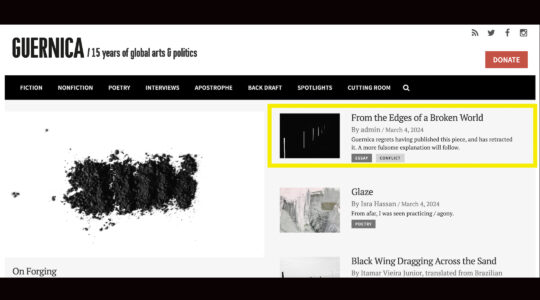Several recent stories shine a light on the challenges and opportunities of the new YouTube-era environment that Israel and its advocates are operating in.
Ha’aretz has a report today on the Israeli Consulate in New York arranging to have videos played on the jumbo screens in Times Square of celebrities sending Independence Day greetings.
“We’re aware of the influence that [the celebrities] filmed in the clip have on so many people around the world,” said Asi Shariv, Israel’s Consul General in New York. “Their connection with Israel is an important part of our efforts to tell the Israeli story to a young, Western audience that does not take an interest in the [Mideast] conflict.”
Of course, all sides have access to video and the means to distribute it on the Internet. For example, Ha’aretz also is reporting that on Tuesday the human rights group B’Tselem unveiled video footage showing an Israeli soldier “firing a rubber-coated bullet at an Israeli protester at close range, during a protest against the separation fence in Bil’in two months ago.”
“The shooting,” according to Ha’aretz, “appears to violate IDF regulations, which state that rubber bullets may be fired from no closer than 40 meters.”
And, of course, plenty of video of the incident in question is up on YouTube.
This video has a quick shot at the end of the wounded Israeli protester on a stretcher…
And then there are user-generated Web sites like Wikipedia, where a well-coordinated stealth campaign can tilt seemingly unbiased information one way or the other. The problem is that Internet-based campaigns coordinated via e-mail leave a paper trail – a point hammered home by Gershom Gorenberg’s recent column in the American Prospect about pro-Palestinian activists exposing an alleged attempt by CAMERA to train supporters to infiltrate and influence the Wikipedia editing process.





